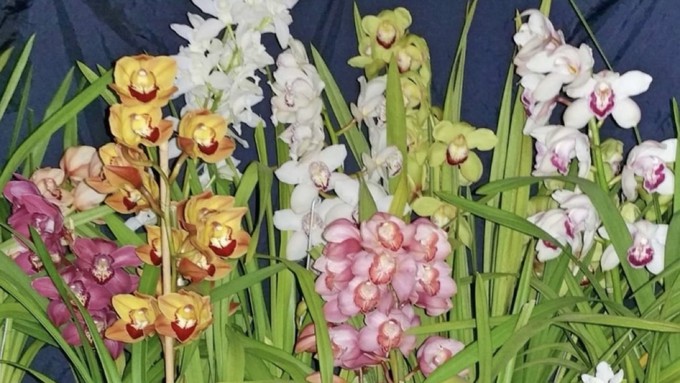
Sacramento Valley Cymbidium Society hosts annual show and sale

See the best of the best local cymbidiums at the annual show and sale of the Sacramento Valley Cymbidium Society this Saturday. Courtesy Sacramento Valley Cymbidium Society
After camellias come cymbidiums – maybe Sacramento’s second favorite March bloomer. These hardy outdoor orchids are just coming into spectacular flower, and they last for weeks.
If you love cymbidiums, you’re in luck. Saturday, March 23, the Sacramento Valley Cymbidium Society is hosting its annual show and sale at Shepard Garden and Arts Center.
The show is a chance to see the best of the best local cymbidiums, displayed by club members. If you want to take some plants home, arrive early: The club will offer more than 75 plants – 50-plus standard-size cymbidiums and 25 miniatures, priced at $30 to $75.
But club members expect them to sell out quickly. That’s what happened when they brought 75 plants to the Shepard Spring Sale this past weekend.
“We had such an amazing response on Saturday (March 16) at the Shepard Sale,” the club posted on Facebook. They sold all but one miniature on this first day of the two-day event.
Fortunately, they’re restocked with new plants for the March 23 sale. These plants were grown by a family-run nursery in San Diego County that specializes in cymbidiums, Casa de las Orquideas.
Club members also will offer advice on how to repot cymbidium orchids and how to care for them. They don’t need much: A spot in the afternoon shade and sufficient irrigation.
Cymbidiums, also known as boat orchids, bloom in massive clusters on 3-foot-tall spikes. With a little protection against frost, these orchids thrive in Sacramento’s mild climate. It’s exposure to temperatures below 55 degrees in winter that prompts all those flowers.
See for yourself on Saturday. Show hours are 10 a.m. to 4 p.m. Admission and parking are free.
The Shepard Center is located at 3330 McKinley Blvd., Sacramento, in McKinley Park.
For more details: www.sgaac.org, https://www.facebook.com/sacramentocymbidiums or email SacCymSoc@yahoo.com.
Comments
0 comments have been posted.Sacramento Digs Gardening to your inbox.
Food in My Back Yard Series
May 6: Maintain soil moisture with mulch for garden success
April 29: What's (already) wrong with my tomato plants?
April 22: Should you stock up on fertilizer? (Yes!)
April 15: Grow culinary herbs in containers
April 8: When to plant summer vegetables
April 1: Don't be fooled by these garden myths
March 25: Fertilizer tips: How to 'feed' your vegetables for healthy growth
March 18: Time to give vegetable seedlings some more space
March 11: Ways to win the fight against weeds
March 4: Potatoes from the garden
Feb. 25: Plant a fruit tree now -- for later
Feb. 18: How to squeeze more food into less space
Feb. 11: When to plant? Consider staggering your transplants
Feb. 4: Starting in seed starting
Sites We Like
Garden Checklist for week of May 4
Enjoy this spring weather – and get gardening!
* Plant, plant, plant! It’s prime planting season in the Sacramento area. Time to set out those tomato transplants along with peppers and eggplants. Pinch off any flowers on new transplants to make them concentrate on establishing roots instead of setting premature fruit.
* Direct-seed melons, cucumbers, summer squash, corn, radishes, pumpkins and annual herbs such as basil.
* Harvest cabbage, lettuce, peas and green onions.
* In the flower garden, direct-seed sunflowers, cosmos, salvia, zinnias, marigolds, celosia and asters. (You also can transplant seedlings for many of the same flowers.)
* Plant dahlia tubers. Other perennials to set out include verbena, coreopsis, coneflower and astilbe.
* Transplant petunias, marigolds and perennial flowers such as astilbe, columbine, coneflowers, coreopsis, dahlias, rudbeckia and verbena.
* Keep an eye out for slugs, snails, earwigs and aphids that want to dine on tender new growth.
* Feed summer bloomers with a balanced fertilizer.
* For continued bloom, cut off spent flowers on roses as well as other flowering plants.
* Add mulch to the garden to maintain moisture. Mulch also cuts down on weeds. But don’t let it mound around the stems or trunks of trees or shrubs. Leave about a 6-inch to 1-foot circle to avoid crown rot or other problems.